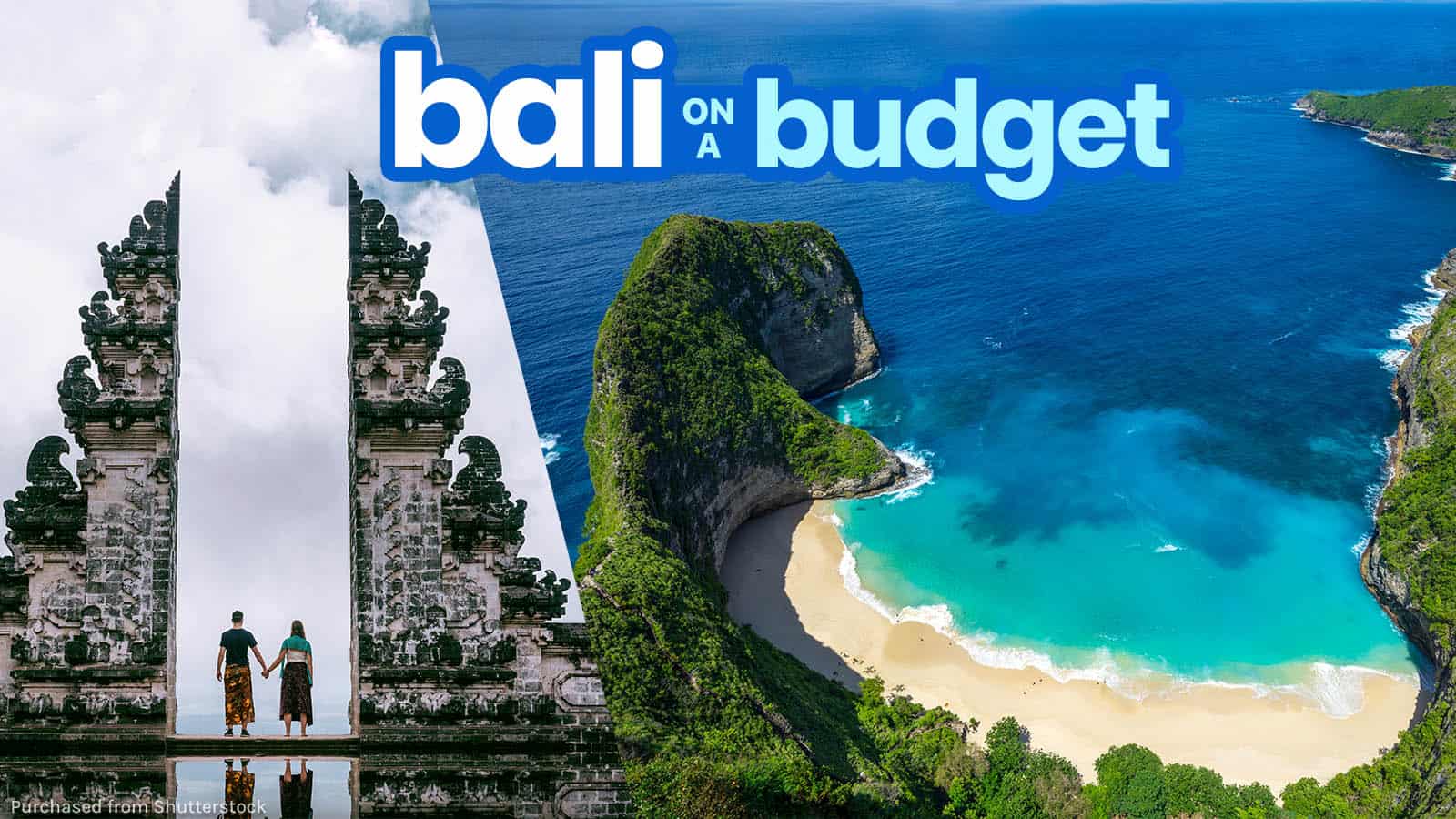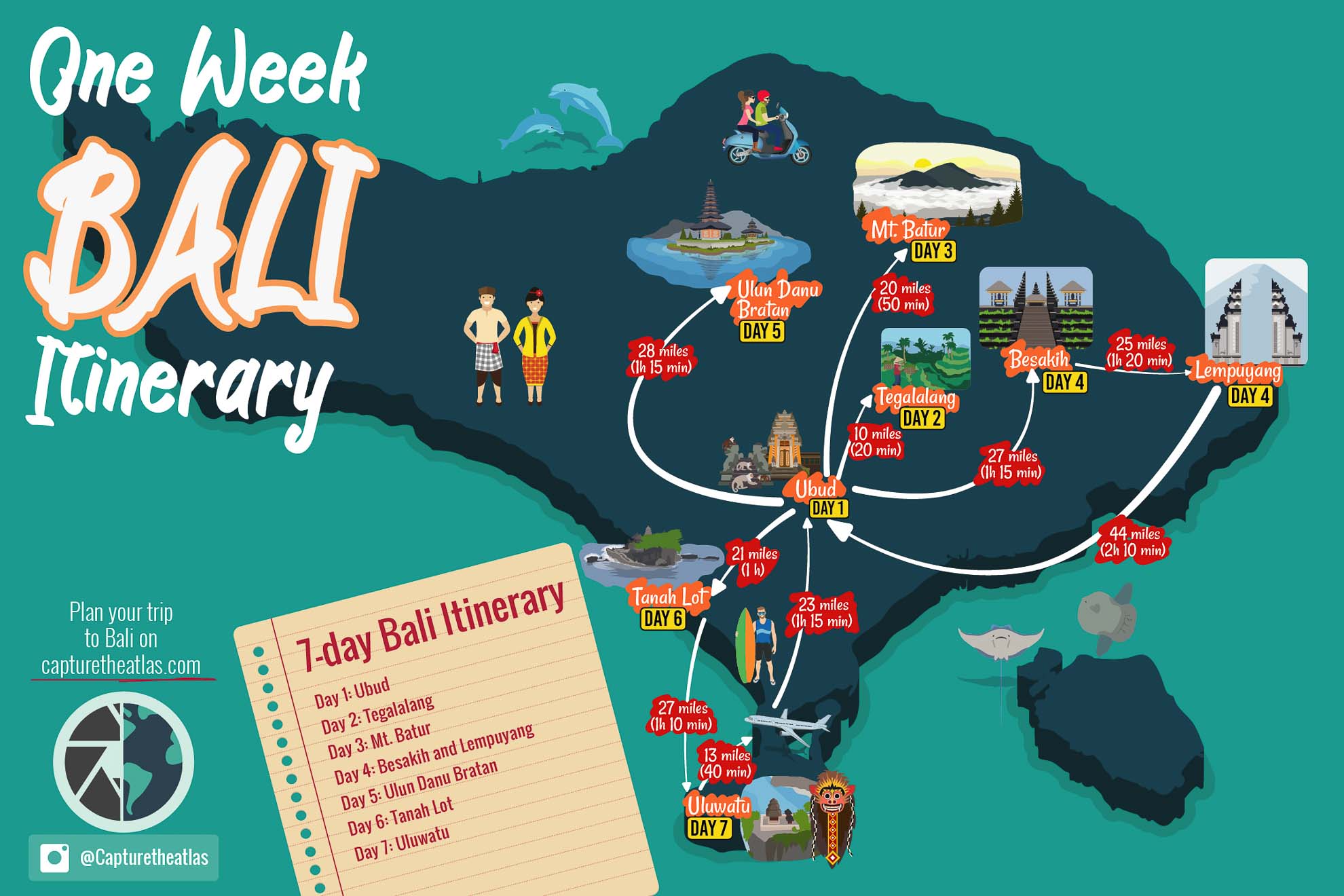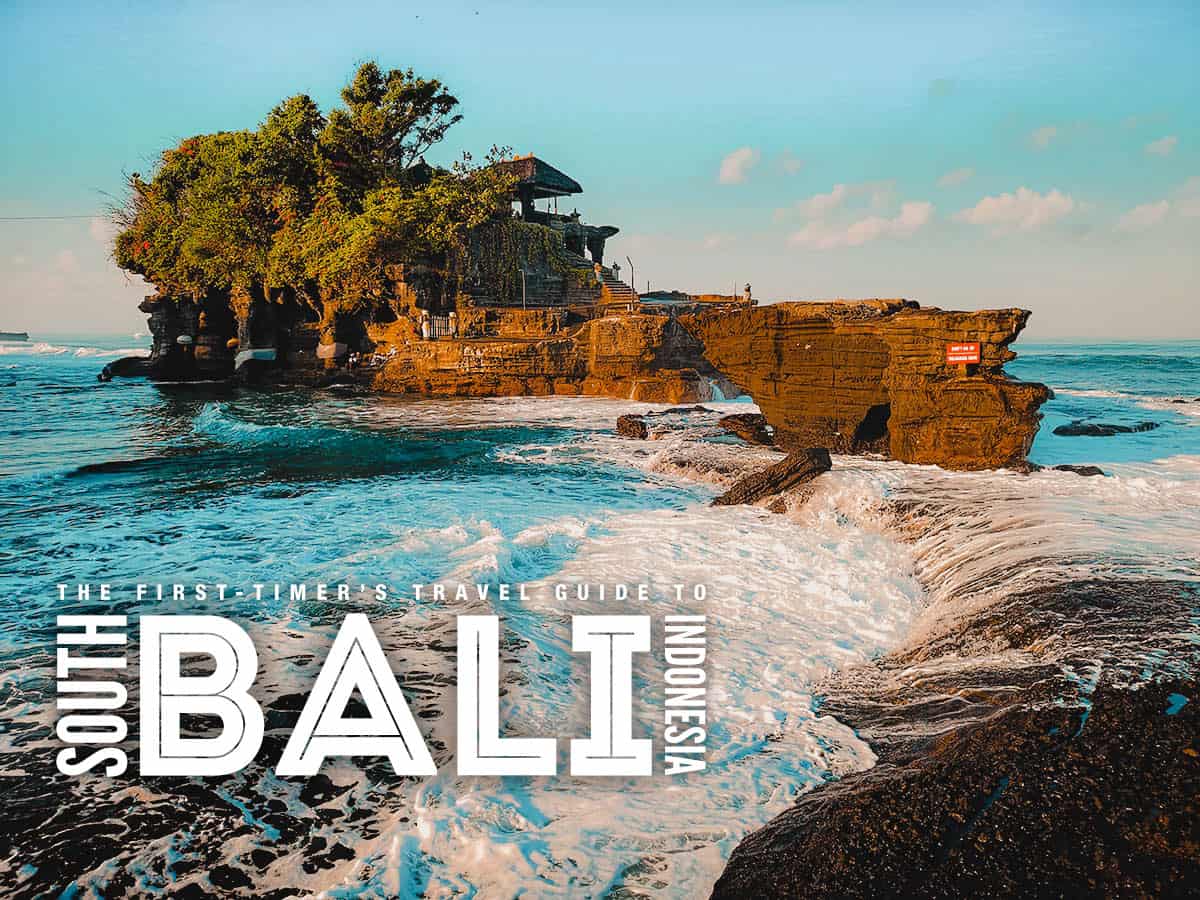
Bali, the "Island of the Gods," is a name that conjures images of vibrant green rice paddies, ancient Hindu temples, volcanic mountains, and pristine beaches. It’s a place where spirituality permeates daily life, where every sunrise feels like a blessing, and where the rhythm of traditional music dances through the air. More than just a tropical paradise, Bali offers a rich tapestry of culture, adventure, wellness, and relaxation, making it one of the world’s most beloved travel destinations.
For first-time visitors and seasoned explorers alike, planning a trip to this Indonesian gem can be an exciting, albeit sometimes overwhelming, endeavor. This comprehensive guide will walk you through everything you need to know to travel to Bali, from its captivating history and must-see attractions to practical tips on accommodation, transportation, and the best time to visit.
A Glimpse into Bali’s Enchanting History

Related Articles about Bali: Your Comprehensive Guide to the Island of the Gods:
- Krabi: A Limestone Legacy Where Luxury Meets Paradise
- A Symphony of History, Art, and Culinary Delights: Unveiling Italy’s Top Attractions
- Journey to the Land of the Rising Sun: Your Comprehensive Guide to Traveling in Japan
- Whispers of the Past, Elegance of the Present: Discovering Kyoto’s Finest Hotels and Timeless Treasures
- Conquering the American Dream: A Comprehensive Guide to Traveling the United States
Bali’s unique character is deeply rooted in its fascinating history, setting it apart from the predominantly Muslim Indonesian archipelago. Its story is one of resilience, cultural preservation, and a profound connection to Hindu traditions.
The earliest evidence of human habitation on Bali dates back to prehistoric times. However, the island’s defining historical chapter began with the arrival of Hinduism from India, likely between the 1st and 5th centuries AD. This period saw the establishment of numerous small Hindu kingdoms across the island.
The most significant turning point came in the 14th century with the expansion of the Majapahit Empire, a powerful Hindu-Buddhist kingdom from Java. As the Majapahit Empire declined and Islam spread across Java, many Javanese nobles, priests, artists, and intellectuals fled to Bali, bringing with them a rich cultural heritage. This migration solidified Bali’s identity as a bastion of Hindu-Javanese culture, fostering a unique blend of traditions, arts, and spiritual practices that thrive to this day. Unlike Java, where Islam eventually became dominant, Bali maintained its Hindu faith, becoming an "island of the last Majapahit."
European contact began in the late 16th century with Dutch explorers, but it wasn’t until the early 20th century that the Dutch colonial government fully exerted its control over Bali, often through brutal military expeditions known as Puputan (ritual suicide in the face of insurmountable odds). Despite colonial rule, Bali’s cultural and religious practices remained largely intact, even finding ways to subtly resist foreign influence.
After Indonesia declared independence in 1945, Bali became part of the new nation. The mid-20th century saw the gradual emergence of tourism, which truly boomed in the late 20th and early 21st centuries. While tourism brought economic prosperity, it also presented challenges related to cultural preservation and environmental sustainability. Today, Bali strives to balance its ancient traditions with the demands of modern tourism, offering visitors an unparalleled glimpse into a living, breathing culture.
Best Time to Visit Bali
Choosing the right time to visit Bali significantly impacts your experience. The island experiences two main seasons: the dry season and the wet season.
-

Dry Season (April to October): This is generally considered the best time to visit.
- Weather: Expect abundant sunshine, lower humidity, and pleasant temperatures (around 26-29°C).
- Activities: Ideal for beach activities, surfing, hiking, temple visits, and exploring.
- Crowds & Prices: This is peak tourist season, especially July and August, and around Easter and Christmas/New Year. Expect higher prices for flights and accommodation, and more crowded attractions.
- Best Months: May, June, and September are often considered the sweet spot – good weather, fewer crowds than peak months, and slightly better prices.
-
Wet Season (November to March):
- Weather: Characterized by higher humidity and frequent, heavy rainfall, often in short, intense bursts rather than all-day downpours. Temperatures remain warm (27-32°C).
- Activities: Still possible to enjoy Bali, but outdoor activities might be interrupted. The landscape is incredibly lush and green, and waterfalls are at their most spectacular. Surfing can be good on the east coast.
- Crowds & Prices: Generally fewer tourists, meaning lower prices for flights and accommodation. However, Christmas and New Year see a significant surge in visitors.
- Consideration: Some roads can become muddy, and ocean visibility for snorkeling/diving might be reduced due to runoff.
Recommendation: For the best balance of weather and manageability of crowds, aim for May, June, or September.
Getting to Bali
Your journey to Bali will almost certainly begin at Ngurah Rai International Airport (DPS), located just south of Denpasar, the capital city.
- Flights: Numerous international airlines offer direct or connecting flights to Denpasar from major hubs worldwide. Booking in advance, especially during peak season, is highly recommended.
- Visa Requirements:
- Visa on Arrival (VoA): Many nationalities are eligible for a 30-day Visa on Arrival, which can be extended once for another 30 days. You can purchase this upon arrival at the airport or pre-apply for an e-VoA online to save time.
- Visa-Exempt: A limited number of countries are visa-exempt for short stays (e.g., ASEAN nations).
- Tourist Visa (B211A): For longer stays or specific purposes, you might need to apply for a B211A visa in advance through an Indonesian embassy or consulate, or via an agent.
- Always check the latest visa regulations for your specific nationality before traveling, as rules can change.
- Arrival Process: After landing, you’ll proceed through immigration (if you have a VoA, you’ll pay for it first), collect your luggage, and then go through customs. Be prepared for potentially long queues during peak times. Ensure you have your passport (with at least 6 months validity) and onward/return ticket handy.
Accommodation Options: Where to Stay
Bali offers an incredibly diverse range of accommodation, catering to every budget and travel style. Your choice of where to stay often dictates the type of experience you’ll have.
-
Luxury Resorts & Villas: Bali is renowned for its opulent resorts and private villas, often featuring infinity pools, stunning views, and personalized service.
- Areas: Seminyak, Canggu, Uluwatu, Ubud, and Nusa Dua are prime locations for high-end stays.
- Ideal for: Honeymooners, families, those seeking privacy, pampering, and exquisite dining.
-
Boutique Hotels & Guesthouses: Offering a more intimate and often stylish experience, these options provide comfort and character without the price tag of a full resort.
- Areas: Ubud (cultural immersion), Canggu (bohemian vibe), Seminyak (trendy dining/shopping).
- Ideal for: Couples, solo travelers, those looking for a blend of comfort and local charm.
-
Budget Hostels & Homestays: Bali has a thriving backpacker scene, with numerous hostels offering dorms and private rooms, as well as homestays that provide a glimpse into local life.
- Areas: Kuta (party scene, although less popular now), Canggu, Ubud, and the Nusa Islands.
- Ideal for: Solo travelers, backpackers, budget-conscious adventurers, and those looking to meet other travelers.
Popular Regions and Their Vibe:
- Ubud: The cultural and spiritual heart. Known for rice paddies, yoga retreats, art galleries, traditional dance performances, and healthy eateries. Perfect for wellness, culture, and nature lovers.
- Seminyak: Upscale and trendy. Offers sophisticated dining, boutique shopping, stylish beach clubs, and vibrant nightlife. Ideal for luxury, fashion, and culinary enthusiasts.
- Canggu: Bohemian and surf-centric. Famous for its surf breaks, healthy cafes, yoga studios, digital nomad community, and laid-back beach vibe. Great for surfers, digital nomads, and those seeking a hip, relaxed atmosphere.
- Uluwatu: Dramatic cliffs, world-class surf breaks, and stunning sunsets. Home to the iconic Uluwatu Temple and luxury clifftop resorts. Best for surfers, romantics, and sunset chasers.
- Nusa Dua: Gated luxury resort enclave. Offers pristine beaches, watersports, and family-friendly resorts. Suited for families and those seeking an all-inclusive, pampered vacation.
- Nusa Islands (Lembongan, Ceningan, Penida): A short boat ride away, these islands offer breathtaking natural beauty, cliff formations, incredible snorkeling/diving, and a slower pace of life. Essential for adventurers, divers, and those seeking raw natural beauty.
Transportation on the Island
Navigating Bali can be an adventure in itself. Traffic can be heavy, especially in the south, but various options make getting around feasible.
- Scooter/Motorbike Rental:
- Pros: Most popular and flexible way to explore. Inexpensive (around 50,000-100,000 IDR per day).
- Cons: Dangerous for inexperienced riders. Bali roads are chaotic, with limited rules. Helmets are mandatory. International Driving Permit (IDP) is required by law, and insurance may not cover accidents without it. Accidents are common.
- Recommendation: Only rent if you are an experienced rider comfortable with heavy traffic and diverse road conditions.
- Ride-Hailing Apps (Gojek & Grab):
- Pros: Uber-like services for cars and motorbikes (GoRide/GrabBike). Convenient, affordable, and readily available in most tourist areas. You can also order food delivery, groceries, and massages.
- Cons: "Taxi mafia" issues in some areas (especially around certain temples and Kuta/Seminyak) where app drivers might be discouraged or blocked.
- Recommendation: Download these apps. They are indispensable for getting around.
- Private Driver:
- Pros: Best option for longer distances, day trips, or if you’re traveling with luggage or a group. Drivers are often knowledgeable guides. You can hire by the hour or for a full day (around 500,000-800,000 IDR for 8-10 hours).
- Cons: More expensive than scooters or ride-hailing for short trips.
- Recommendation: Arrange with your accommodation or through reputable tour operators.
- Local Taxis:
- Pros: Readily available in tourist areas.
- Cons: Ensure the meter is used (Blue Bird Group taxis are generally reliable for this). Be wary of unmetered taxis or inflated prices.
- Recommendation: Use Blue Bird if possible, or stick to Gojek/Grab for transparency.
- Boats/Ferries: Essential for island hopping to the Nusa Islands or Lombok. Fast boats depart from Sanur, Padang Bai, and other ports. Book tickets in advance, especially during peak season.
Top Attractions and Experiences
Bali’s attractions are incredibly diverse, catering to every interest.
-
Ubud’s Cultural Heart:
- Tegallalang Rice Terraces: Iconic cascading green paddies, offering stunning photo opportunities and swings.
- Ubud Monkey Forest: A sacred sanctuary home to hundreds of mischievous macaques, ancient temples, and lush jungle.
- Ubud Art Market: A maze of stalls selling handicrafts, clothing, and souvenirs.
- Goa Gajah (Elephant Cave): An ancient archaeological site with a mysterious cave entrance and bathing temples.
- Tirta Empul Temple: A Hindu water temple where Balinese Hindus go for ritual purification.
- Yoga & Wellness Retreats: Ubud is a global hub for yoga, meditation, and holistic healing.
-
Iconic Temples & Spiritual Sites:
- Tanah Lot Temple: A majestic sea temple perched on a rock formation, famous for its dramatic sunsets.
- Ulun Danu Beratan Temple: A picturesque water temple on Lake Bratan, dedicated to the goddess of the lake.
- Uluwatu Temple: Perched on a dramatic cliff, offering breathtaking ocean views and nightly Kecak fire dance performances.
- Besakih Temple (Mother Temple): The largest and holiest temple complex in Bali, located on the slopes of Mount Agung.
-
Beaches & Surf Spots:
- Seminyak Beach: Trendy beach clubs, fine dining, and beautiful sunsets.
- Canggu Beaches (Echo Beach, Berawa Beach): Popular for surfing (all levels), bohemian vibe, and beach clubs.
- Uluwatu Beaches (Padang Padang, Bingin, Suluban): World-class surf breaks, hidden coves, and stunning cliffside views.
- Nusa Dua Beach: Calm, clear waters, ideal for families and watersports.
-
Natural Wonders & Adventure:
- Mount Batur Sunrise Trek: Hike an active volcano at dawn for an unforgettable sunrise over the caldera.
- Waterfalls: Explore stunning cascades like Tegenungan, Sekumpul, Nungnung, and Gitgit.
- Nusa Islands (Penida, Lembongan, Ceningan):
- Nusa Penida: Kelingking Beach (T-Rex cliff), Broken Beach, Angel’s Billabong, Diamond Beach – dramatic landscapes.
- Nusa Lembongan & Ceningan: Devil’s Tear, Mushroom Bay, Blue Lagoon, snorkeling, and diving.
- Rice Terraces: Beyond Tegallalang, explore Jatiluwih Rice Terraces (UNESCO World Heritage Site) for vast, serene landscapes.
-
Unique Experiences:
- Balinese Cooking Class: Learn to prepare traditional Balinese dishes.
- Traditional Dance Performances: Witness the intricate beauty of Legong, Barong, or Kecak dances.
- Relaxing Massages & Spa Treatments: Indulge in traditional Balinese healing therapies.
- Coffee Plantations: Sample famous Kopi Luwak and learn about coffee production.
Essential Travel Tips for Bali
To ensure a smooth and enjoyable trip, keep these practical tips in mind:
-
Money & Currency:
- The local currency is the Indonesian Rupiah (IDR).
- ATMs are widely available in tourist areas, but inform your bank before traveling. Use ATMs connected to banks and be aware of potential skimmers.
- Credit cards are accepted at most hotels, restaurants, and larger shops, but cash is essential for smaller vendors, local markets, and transportation.
- Bargaining is common in markets, but do so respectfully and with a smile.
-
Health & Safety:
- Drink bottled water only. Tap water is not safe to drink.
- Be cautious with street food (though often delicious, ensure it’s cooked fresh and hot).
- Mosquitoes: Dengue fever is a risk. Use repellent, especially at dawn and dusk.
- Sun Protection: The sun is strong; use high SPF sunscreen, wear hats, and seek shade.
- Travel Insurance: Highly recommended for medical emergencies, trip cancellations, and lost luggage.
- Road Safety: Be extremely careful if renting a scooter. Pedestrian walkways are often non-existent or uneven.
- Petty Crime: Be aware of snatch-and-grab thefts, especially from scooters. Keep valuables secure.
-
Culture & Etiquette:
- Temple Etiquette: Dress modestly (shoulders and knees covered) when visiting temples. Sarongs are often provided or available for rent. Do not step on offerings (Canang Sari) left on the ground.
- Respect: Use your right hand when giving or receiving something. Don’t touch people’s heads.
- Religion: Hinduism is central to Balinese life. Be respectful of ceremonies and local customs.
- Photography: Always ask permission before taking photos of people, especially during ceremonies.
-
Communication:
- Bahasa Indonesia is the official language. Learning a few basic phrases (e.g., "Terima kasih" – thank you, "Halo" – hello, "Berapa?" – how much?) will be appreciated.
- English is widely spoken in tourist areas.
- SIM Card: Purchase a local SIM card at the airport or a phone shop for affordable data and calls.
-
Connectivity:
- Wi-Fi is generally good and widely available in hotels, cafes, and restaurants.
-
Sustainability:
- Reduce Plastic: Bring a reusable water bottle and shopping bag. Bali is making efforts to reduce plastic waste.
- Support Local: Choose local businesses, artisans, and tour operators.
- Eco-Tourism: Opt for eco-friendly tours and accommodations.
- Animal Welfare: Be mindful of animal exploitation (e.g., don’t ride elephants, avoid civet coffee farms that mistreat animals).
Conclusion
Bali is more than just a destination; it’s an experience that captivates the senses and nourishes the soul. From the tranquil beauty of its rice paddies to the spiritual allure of its temples, the thrill of its surf breaks, and the warmth of its people, the Island of the Gods offers an unparalleled journey.
By understanding its rich history, planning your visit during the best season, choosing accommodations that fit your style, navigating with local transport, and respecting its vibrant culture, you’re well on your way to crafting an unforgettable Balinese adventure. So, pack your bags, open your heart, and prepare to be enchanted by the magic of Bali.





